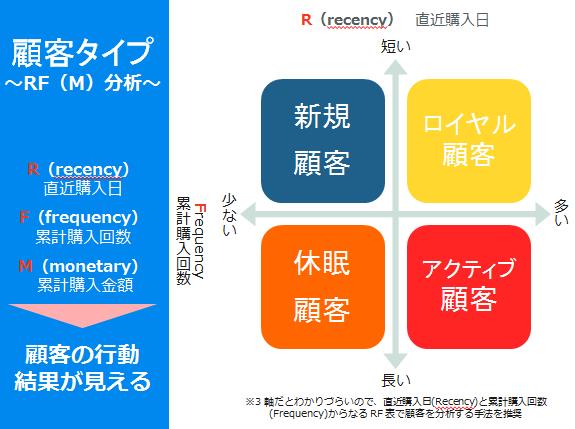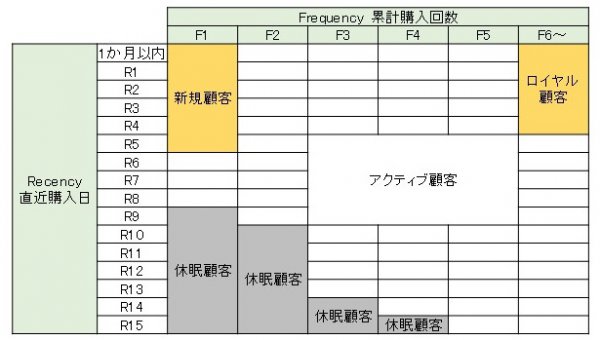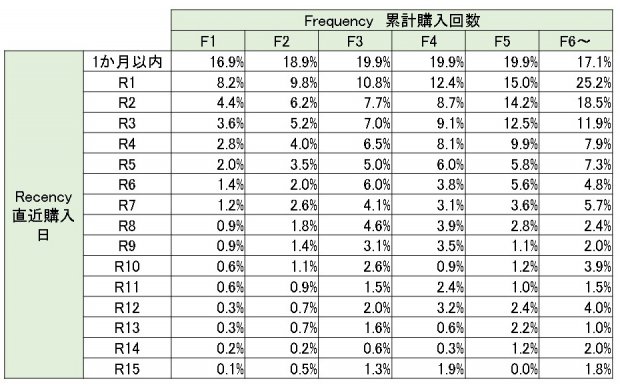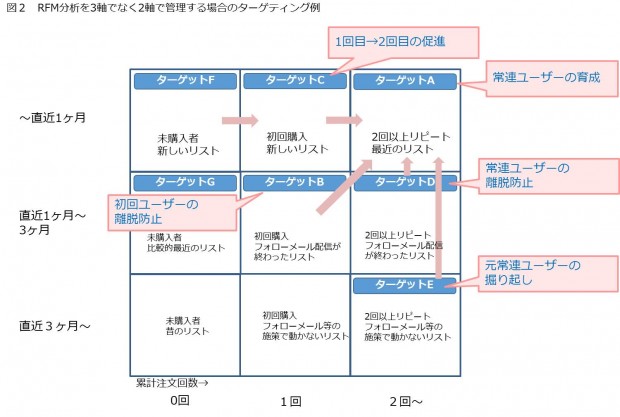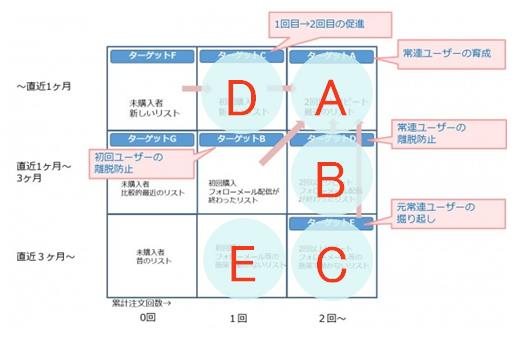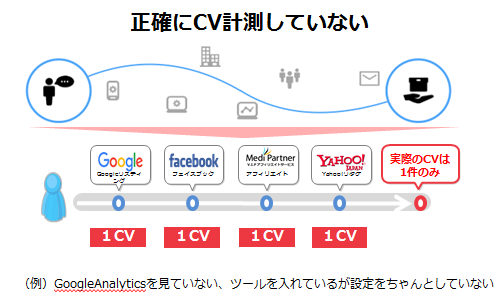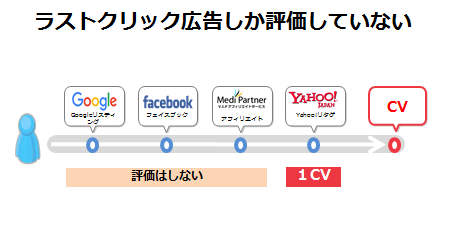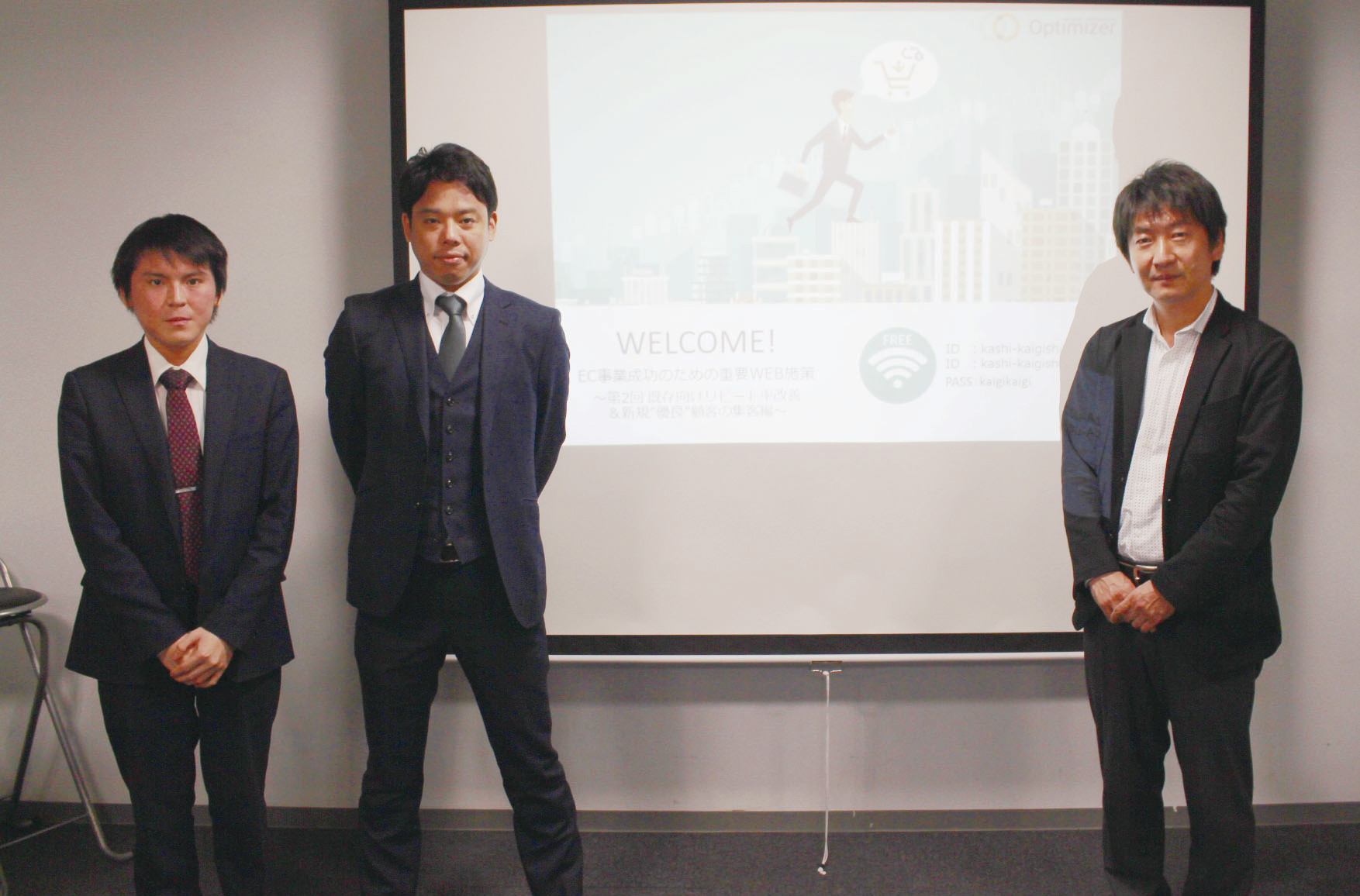
Hello! This is Shimodaira from public relations.
In the e-commerce business, it is now essential to increase the number of repeat customers.
However, there are limits to how much you can increase sales.
In situations where you don't have many existing customers to begin with, or where you've already tried various strategies for existing customers but aren't seeing any increase in sales, if you want to increase sales, you're going to need new customers. Therefore, it is important to increase LTV (customer lifetime value) at the timing of new customer acquisition by discovering customers who have a high repeat rate and are likely to become loyal customers in the future!
November 28, 2017 at the Optimizer office
Seminar for repeat mail-order businesses of cosmetics, health foods, etc.
"Learn from a professional web marketer! Important web measures for success in your e-commerce business that you can't hear about anymore" ~The 2nd edition of Improving repeat rate for existing customers and attracting new customers~ was held.
What can I do to increase the customer spend by improving the repeat rate of my current customers, while increasing my LTV (customer lifetime value) by acquiring customers who are likely to become good customers?Increasing sales in my e-commerce business Let's get the tips to go!
![]()
[Part 1] The key to success in EC business is repeat purchases!
Having customers who have already purchased the product continue to use it will help expand your business. The "cost of acquiring new customers" is 5 times the "cost of getting repeat customers"! Create sales with less cost by not letting existing customers go. Existing customers are very important.
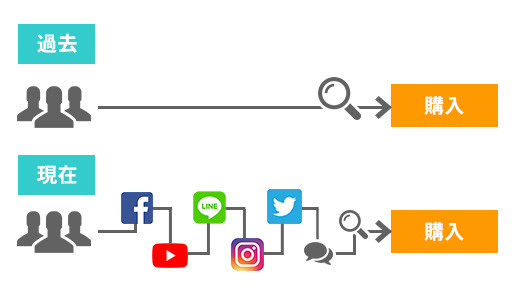
The path to purchasing a product, which used to be a straight path, has now become extremely complex.
In the past, TV was the only point of contact, but now there are many points of contact, including SNS.
It is important to choose which media to use in your business, both new and existing.
The effects of online measures can be visualized, so you can see the effects of the costs you spend.
Then, you tend to end up spending money only on efficient measures (people who already have some knowledge of the product)...in other words, you are not reaching out to potential customers.
The people who will increase the number of CVs will be new, so if you don't tap into that, you'll get a certain amount of sales, but beyond that you'll stagnate. Repeating existing works is also important. However, finding new opportunities is absolutely important for business expansion! The effects of all web measures can be seen in numbers. It is important to clearly decide what the purpose of each is and what indicators will be used to judge whether it is good or bad. Shifting to marketing to potential customers also involves repeat business measures.
Do you understand what repeat is?
Number of monthly repeat customers (people) ÷ Cumulative number of new customers (people) * 100
The higher the "repeat rate", the more likely the customers who purchased the product to purchase it again = the higher the number of repeat customers.
The more repeat customers you have each month, the more sales you can expect next month and the month after.
I don't know the total number of new customers who have visited the store since it opened...
There may be some people.
In such a case, click here!
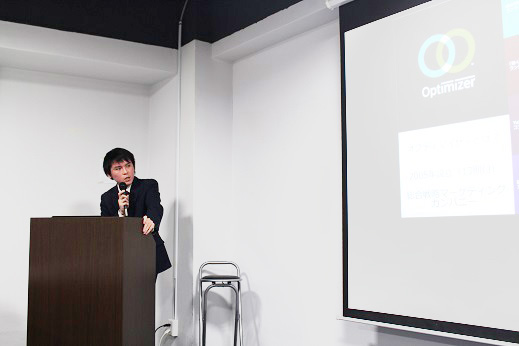
*Thanks to the increase in repeat customers, the overall number of customers has increased, so the repeat rate has naturally increased.
*Possibility of relying on temporary increase in new customers
If 3 months after opening, the number of new customers after opening is 600, and the number of repeat customers after 3 months is 200.
6 months after opening, the number of new customers after opening is 800, and the number of repeat customers after 6 months is 400.
Considering the calculated repeat rate, it can be said that this store has been able to steadily increase the number of repeat customers while acquiring new customers in six months.
Next is the repeat customer rate, which is confused with the repeat customer rate. This is also important.
<Formula for calculating repeater rate>
Number of monthly repeat customers (people) ÷ Total number of monthly customers (people) * 100
Repeat customer rate represents the percentage of repeat customers out of the number of monthly customers. If we don't increase the number of new customers, this will naturally increase. Please note that this is not the cumulative number of customers!
In other words, just because your repeat customer rate is high, it doesn't necessarily mean that your marketing is going well.
*If only repeat customers visit the store or purchase products in that month, the repeat customer rate will be 100%.
Summary…
○Repeat rate→
×Repeater rate→
In actual business, if the repeat rate is low, it is a sign that there are few new customers or that many of the customers are not repeat customers.
Example) Let's say you acquired 500 new customers with an advertising cost of 10 million yen.
If the average gross profit per customer is 30,000 yen, the company's profit per purchase is
However, if all of these new customers become repeat customers and make a second purchase, the company's profits will be
4 times more revenue than if the customer were not a repeat customer and only made one purchase!
You can see how increasing the number of repeat customers and increasing the repeat rate will allow you to efficiently increase profits. That's why the repeat rate is so important.
In the first place, the reason why customers do not get repeat business is that they may blame it on the external environment, but in reality, the most common cause is a lack of interest in customers. If you don't communicate regularly with your customers, you're actually shrinking your business. When it comes to continuous touch, I think of e-mail newsletters, and it has been proven psychologically that simple, constant contact has the effect of increasing trust in a company. Even if you don't read it, it shows that you're doing a good job and builds trust. Please keep in mind that the reason why you are not successful in acquiring repeat customers is because you do not have continuous customer communication, such as follow-up after purchase.
![]()
What indicators should you always look at to improve your repeat rate?
The result of improving repeat rate is "high LTV".
The reason why you need to pay attention is that a high LTV has the following advantages.
① The ratio of orders from repeat customers to sales will increase, increasing overall sales.
②The ability to set a high CPA (cost of acquisition per new customer)
If you set a high target CPA when attracting customers, you will not only increase the volume of customer acquisition, but also increase the options for attracting customers (choices on where to advertise and how to attract customers), and avoid bottoming out in customer acquisition compared to when your CPA target is low. Accelerate customer acquisition
LTV is a must-see factor to increase your repeat rate!
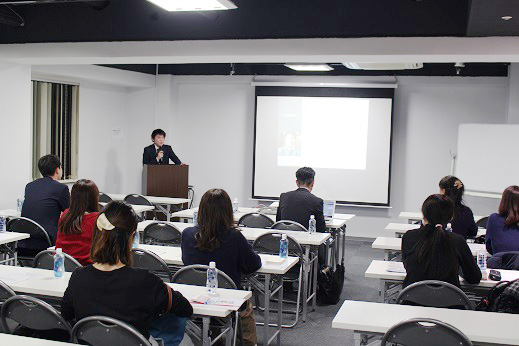
<LTV calculation formula>
LTV = first sales + (next sales x number of repeats)
If the profit margin is 50%, x 0.5% is a guideline for the profit (1 year) brought by one person's CV, and is a guideline for advertising budget such as acquisition cost per person.
In fact, we were able to raise the budget a little more for the acquisition price so far! It can also be viewed as such.
Another important point is to calculate LTV for each product you handle.
Marketing measures can also be pinpointed.
In addition, there are six other elements necessary to improve the repeat rate.
- How long will the initial purchase date be extended?
- Depends on the product and product category
- How long does it take to be considered a repeat? (One year? Half a year?)
- Lead time (how long does it take to purchase?)
- Remaining rate by cumulative number of orders
- Purchased products and product categories for repeat purchases
Be sure to keep these in mind!
![]()
[Part 2] How to use PDCA to effectively increase repeat sales
What type of customer are you now?
This time, let's try out the idea of RF analysis!
This is a diagram that divides customers into two axes: the most recent purchase date (Recency) and the cumulative number of purchases (Frequency).
This allows you to visualize the results of customer actions.
source:Part 1: Let's break down the customer structure and find the Golden Root®!quoted from
This is what it looks like in a table.
source:Part 1: Let's break down the customer structure and find the Golden Root®!quoted from
An RF table is simply a table like the one above that plots customers.
The definition of R1 and R2 should be decided by the company and set as rules.
If you want to create a table from a more management perspective, please use "RF switch rate."
source:Part 1: Let's break down the customer structure and find the Golden Root®!quoted from
This is a method that shows the monthly customer migration rate in a % table, and by looking at the RF switch rate during the analysis stage, you can decide what measures to take for this layer.
However, it also has the weakness of not being able to see the customer's trajectory (behavior route).
It would be extremely convenient if there was an ideal training route that could predict customer behavior patterns in advance.
In fact, you can visualize this by using a marketing effectiveness measurement tool called ``AdEbis''.
How to approach each type to encourage repeat business
Let's start by using the RF table to understand the current situation.
It is important to design KPIs and analyze the current situation in order to determine what issues exist in which areas and how to improve them, and to formulate specific measures.
Let's run the PDCA cycle as follows to increase the repeat rate.
① Create a hypothesis based on the results of past measures and decide on specific future measures
② Organize targets and messages (execution/verification)
③Continually conduct fixed-point observation of the elements necessary to increase repeat rates by product, period, customer type, and measure, discover issues, formulate hypotheses, and implement improvement measures.
This is a consulting topic, and this is where optimizers excel.
If you are worried that "I have introduced various tools, but I don't know what to do!",
Based on the analysis results, we will propose specific improvement measures.
We have summarized the meaning of each block and what to do based on the RF analysis above.
source:5 factors and 7 indicators that affect the repeat rate of an EC siteQuoted from
The following five segments require particular emphasis on CRM.
Let's take action to aim for target A!
source:5 factors and 7 indicators that affect the repeat rate of an EC siteQuoted from
→Maintaining relationships through benefits, preferential treatment systems, and campaigns exclusive to loyal customers
→Customers who need upsell
→Customers who are leaving. Urgent action required
→Customers who should be developed into excellent customers through cross-selling and up-selling
→List of customers who should be deleted considering the cost of ownership if the plan does not work
Anyway, the goal is to increase the FR switch rate so that the final landing is A!
To increase the FR switch rate...
- Timing optimization: Who should you approach when and through what channels?
- Volume optimization: how much? What kind of cost balance should be used?
- Offer optimization: What offers should be presented and when?
- Creative optimization: What kind of creative should be aimed at?
To increase the repeat rate, consider the FR switch rate!
Although it is very important to emphasize repeat customers, it is also necessary to acquire new customers.
Since the population is limited, sales can only be increased within the current situation.
However, it costs five times as much to dig up a new site as it does for an existing one, so if you don't have repeat customers, you'll end up incurring costs.
Let's discover new customers who will come back again!
![]()
[Part 3] How to attract new quality customers
New users with a high LTV that lead to a high repeat rate are defined as new "quality" customers.
Acquiring them is extremely important in order to increase sales in the EC business.
It would be great if you could pinpoint only those customers from the beginning.
This is possible by implementing measures and visualizing the results!
Does acquiring new customers affect LTV?
Let's create an analysis method (winning route) that can predict customer behavior patterns in advance!
A winning route is the most distinctive route that the high LTV group has followed since their first purchase, when the customer's purchase route is broken down by various factors such as purchase time, product, amount, policy, conversion period, etc. .
You can visualize this by introducing marketing effectiveness measurement tools.

The key points when calculating the winning route are:
(2) If the number of orders received is the key, use a common deadline such as within X days.
With marketing effectiveness measurement tools, you can see which measures and products led to winning routes, so you can expand your e-commerce business by investing costs and expanding measures.
How to use customer attraction effectiveness measurement tools
Many of our customers use a variety of media to develop their strategies.
Even if CVs are established in various media, only one item actually sells...it often happens.
source:○○○quoted from
We often hear comments such as ``It is difficult to evaluate CV because it is not possible to measure CV accurately'' and ``it is difficult to allocate the budget.'' A common method of evaluation is to evaluate the media that occurs before the CV as 1CV. There are many cases where the rest is discarded and only the last click ad is evaluated. However, this results in a situation where measures to acquire new customers are not continued and the menu of implementation is uneven.
source:○○○quoted from
In the end, we were only able to develop measures for the visible layer that were worth it.
But if you don't acquire new customers, your sales won't increase.
Measures should be implemented for each layer with separate objectives.
The common CPA is just a measure for the healthy population. For potential customers, this includes new rate and action rate, and for customer base, it includes share rate.
The situation is such that last-click evaluation basically only evaluates measures aimed at the visible demographic.
If you want to increase the number of new customers in the future, you should expand the evaluation range and expand the CV parameter.
In other words, the best way to conduct marketing activities to expand your e-commerce business is to
Correctly evaluate the latent demographic (awareness, etc.) and the active demographic (acquisition/repeat, etc.) using each indicator.
↓
In order to correctly evaluate each indicator, it is necessary to visualize the numbers.
↓
Marketing effectiveness measurement tools make this possible, so it is meaningful to introduce them as a basis for judgment when developing strategies and tactics.
※to be continued
Therefore, in order to analyze where users with high LTV come from, we introduce AdEbis as a marketing effectiveness measurement tool!
For those who have not been able to analyze or take action on the results, Optimizer can support you.
A special lecturer from Lockon came to learn more about it and how to use it.
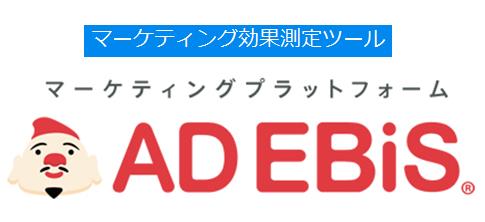
Ad Ebisu is
He is good at acquiring potential customers.
It is important to figure out how to make it visible to a user group whose needs have not increased that much.
In order to get started there, let's visualize how CV is being achieved and take countermeasures.
Analyzing numbers solidifies the basis for deciding on strategies and tactics.
↓
You can find effective strategies for acquiring new "quality" customers and winning patterns that lead to high repeat rates.
↓
Achieving efficient e-commerce business expansion by implementing winning patterns
in conclusion
Finally, I have summarized three things that I want to remember today.
① Measures and KPI settings for latent and actual customers with the aim of achieving a high repeat rate
②Visualize measures and behavior of good customers by introducing effect measurement tools
③Analysis and implementation of strategic/tactical action plans based on visualized results
After the seminar, the participants said,
“It was easy to understand because he used case studies to explain how to respond to different customer types to increase the repeat rate, and how to attract customers with LTV in mind to acquire good customers.”
"Until now, we have been biased towards measures aimed at the visible demographic, and now we realize that we need to reevaluate measures tailored to each demographic. We will share this within the company right away."
We received feedback such as:
I hope that this report will be of some use to those of you who were unfortunately unable to attend.
Introduction of event holding
The next seminar will be held on Wednesday, December 20, 2017, at the Optimizer seminar room, also located in Akasaka Mitsuke. The final episode of the series seminar for EC businesses is about social media linked measures! We will talk about SNS usage techniques that can be put into practice right away to capture the hearts of users. If you are interested, please come and join us!
